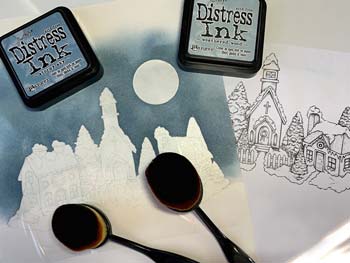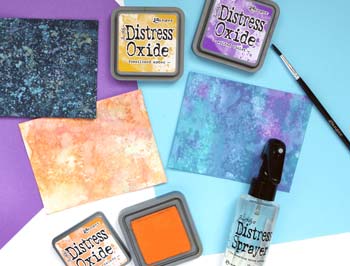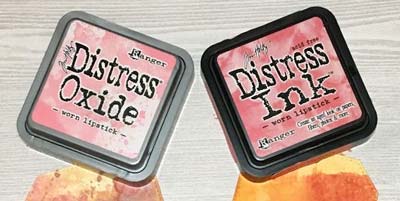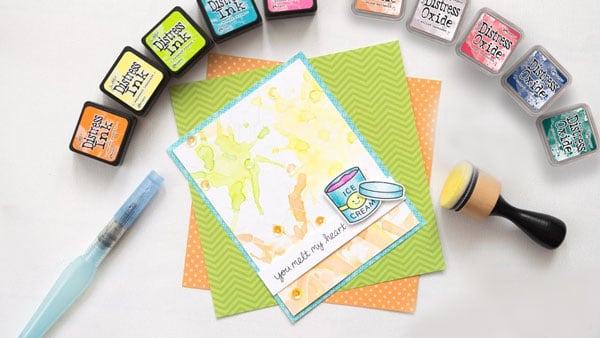Distress Ink Vs Distress Oxide: What Are The Key Differences?
While choosing between two things with similar characteristics, it’s crucial to know about every tiny detail and then compare them with each other to decide which one is the most suitable option for you.
Say, for example, you love to draw and paint on paper. Now that you have decided to try your hands at ink arts and see if you are good at it, the first question that might pop in your mind is, "Which one is the better option between the distress ink and the oxide version?"
Well, we are going to let you decide that for yourself! But first, we will discuss distress Ink Vs distress oxide: what are the key differences and which one to use for your artwork in detail. Read along to the rest of this article to find out more and choose the one that suits your purpose.
Table of Contents
What Is Distress Ink?
If you are into papercrafts, especially if you love making interesting background for photos or cardstocks or any kind of stamping, then you must have heard about distress ink quite often.
Ranger, an internationally recognized manufacturer for making commercial inks, first introduced this distress ink to the world.
Tim Holtz, the signature designer who works with Ranger, describes this material as an acid-free, environment-friendly dye that reacts with water to create a feasible, weather-beaten look on paper.
The interesting fact about this product is, the aged effect that it creates doesn’t fade away over time, which makes your artwork last forever without a change in its quality!
From a wide range of 61 different dye collections, you can choose your favorite color pad and show your creativity by drawing different patterns on your scrapbook, photos or paper.
Found in local craft shops and online, you should add a set of this wonderful color palette to your toolbox, as it’s a suitable form of artwork for people of all ages!
Benefits Of Distress Ink

So, what makes this particular dye palette so special?
Let’s find out!
Colors
We can’t seem to get over the fact that there are 61 different color options to choose from!
I mean, come on! It’s like a miniature world of colors and you have the freedom to choose whichever color you prefer.
Some unique shades with classy names are available, which might help you decide on what color you want to use for your project. From Forest Moss to Salty Ocean or the Worn Lipstick shade, the palettes are sure to amaze with their characteristics.
Size
If you are still confused about whether you want to add a full-sized dye set to your collection, then you can try its mini version as well!
The standard size of these pads are available in 3x3 inches size. However, Rangers has come up with a smaller version to give you a glimpse of what you are about to get in the full package with the help of its mini stackable pads, which are 1x1 inches in size.
It will cost less and are easily storable. Perfect for a beginner who is just starting to test the water in this world!
Reaction With Water
This property is, by far the most amazing of all other features of distress ink. Just by adding droplets of water, you get this amazing vintage effect that doesn’t fade away ever!
Once wet, you will be able to see the stains traveling across the surface and create different patterns and designs of their own. You can also control the flow of the stain with the help of a blending tool or a sponge.
Blending Capability
The dye-based formula is designed to be blended in perfect harmony with other colors.
Once the dye is applied on a surface, it doesn’t dry straight away. The color stays wet for a long time. So, you have the option to throw in some other colors into the mix as well!
Then using a blending tool, you can easily blur out the differences between two colors and create a complete look for your art project.
Disadvantages Of Distress Ink
Continuous Reaction
A downside of using this formula is that, even when the paper is completely dry, if you add a single drop of water, it’s still going to react and start creating a new pattern altogether.
So, you have to be careful and make sure the paper doesn't get wet afterward. Or you can use a sealant to lock its surface and prevent moisture from damaging it in the future. My opinion, use good quality watercolor paper that can adopt high density ink.
Less Adaptable
While applying on different surfaces, the colors may vary quite a lot.
The stains look perfect when it’s applied on a light background. However, if you apply the same color on a hard surface or a darker background, it might not stand out like the other one did.
What Is Distress Oxide?
When it comes to distress oxide, things are a little bit different.
It’s a combination of dye and pigment that oxidizes as soon as it comes close to water.
So, what does “oxidization” mean?
Well, when you apply this formula and sprinkle water on top of its surface, you will notice a distinct feature, which isn’t present in the distress ink. The spots that appear on the surface represents a more saturated color. Once dried out, it leaves a chalky texture on top of the surface.
This formula is also compatible to work alongside with distress dye version. But keep in mind, the color tones may not match with each other even if you try the same shade from these two methods.
Benefits Of Distress Oxide

Thick Coat
Once you start using this formula, you will immediately notice that it paints a thick coat on the surface.
It works almost like a watercolor on a piece of paper! A big advantage of this property is, you only need to apply a little amount of this formula and use a blending tool to spread that onto the rest of the surface.
Multi-Layer Effect
Since all we are talking about coloring with only one color at a time, don’t get the wrong idea now!
You can use multiple colors while working on a project. This dye plus pigment-based formula allows you to create different layers simultaneously.
You can even blend the layers beautifully on top of each other to create a unique color that will make your design even more amazing. The pigment element lets the layer work together without getting muddy or unclear.
Compatibility
You can create artwork using both s ink and the oxide version at the same time!
The oxide already has the dye element inside it. And it’s perfectly fine to use any ink palette with it. So, the next time you find an ink shade that you like, you can add it to the mix and create a combo effect on your project.
Texture
This dihybrid formula has a creamy texture to it. Meaning, when you start applying the formula onto a surface and add some water to it, the paint doesn’t immediately soak into the paper. Instead, it floats around the surface and starts blending all the colors until it’s dried completely.
Disadvantages Of Distress Oxide
Not Translucent
Because of the pigment property, this formula isn’t exactly see-through. That’s why it comes out as a thick paint while applying. This also means the colors are less vibrant and lighter than their dye version.
Dries Slowly
Remember, how we described the oxidized colors float on the surface like liquid paint?
Although this property gives you enough time to mix in more colors, there's a downside to it. It takes quite a while to dry the painted surface.
To solve this problem, you can use a heat tool or a craft iron to dry it in a short amount of time.
Comparing Distress Oxide VS. Distress Ink

You might have noticed that there are many similarities between these two formulas. They both react with water, paint the surface well and most importantly, offer you to work with a wide range of colors!
Having said that, we set aside some fine details that are enough to give you an insight into how both of these items differ from each other in some aspects.
Size
As we have mentioned earlier in this article, the dye version is available mini-pads which are only 1x1 inches in size. This portable version makes this item travel-friendly, easy to carry and store anywhere!
Whereas, the oxide version is only available in the standard 3x3 inches size. The formula of this item is built in such a way that it takes a larger surface to work properly. Therefore, the mini sizes might still not be available in the future either.
Visibility
Distress ink acts differently based on different surfaces.
For example, it looks bright and vibrant on a white piece of paper. However, the look completely changes if you use a darker background or a hard surface instead. The color won’t be as visible as before and mostly look pale in comparison.
On the other hand, the pigmented version works better in this type of situation. Even if you use a darker surface or a hard craft paper as a background, the color still stands out and is visible properly.
Multiple Layer Effect
You can’t apply more than one layer at a time in the dye version. Overlapping different colors will result in a muddy appearance and it might ruin the entire look of your artwork.
However, you can add as many layers as you want with the help of oxide ink pads. The formula is built in a way to accommodate all the colors and blend them beautifully into the design that you want.
Vibrancy
Once you are finished applying the ink onto a surface, wait for some time and then take a look at the finished project. The colors appear to be so vibrant and beautiful! The dye element makes the ink appear more prominently on the surface and makes it stand out.
On the other hand, the pigmented version appears less vibrant and comes off as a slightly muted color compared to the dye version. It looks almost similar to acrylic paint from a distance.
Bottom Line – Which One to Go For?
The above discussion on distress ink Vs distress oxide: what are the key differences and which one to use will give you an insight on both items. But it is up to you which one you will choose for your work and what better meets your requirements.
For example, if you are working with a dark-colored background or planning to add multiple layers on your artwork to create a unique effect, then clearly it’s better to go with the oxidized version.
On the other hand, if the surface you are drawing on has a lighter shade and you want a more vibrant and cheerful appearance, then the dye version will work best for you.
Whichever option you select, remember that it will affect the quality of your art, in a good or a bad way.
So, choose wisely, work with confidence and draw your heart out!
And most importantly, don’t forget to love what you do. All the best wishes!
By the way you can read this post where we discuss about distress ink using guideline.

